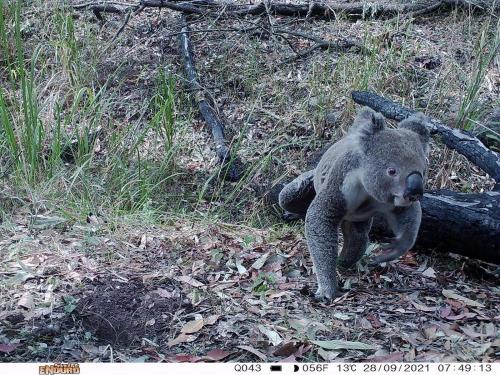
https://www.worldwildlife.org/stories/how-artificial-intelligence-buys-v...
There’s an old adage that says we can’t manage what we can’t measure. And this rings especially true when it comes to conservation. Trying to measure biodiversity—the variety of life in a given area—is a critical part of WWF's conservation work.
After the devastating bushfires that swept through Australia in 2020, 73,000 square miles—about twice the area of Ohio—burned, affecting an estimated 3 billion animals. Once the dust settled and the smoke cleared, WWF-US teamed up with colleagues from WWF-Australia and Google to initiate a wildlife monitoring project called Eyes on Recovery. The idea was to set up a network of cameras that would serve as our eyes in the bush. My colleagues and I were determined to measure how Australia's unique and endangered wildlife were recovering from the destruction.
In 2023 I traveled to Blue Mountains National Park in Eastern Australia. For a week I hiked with Dr. Emma Spencer, a program coordinator with WWF-Australia, over the burnt landscape and wrapped our arms around the trees, turned jet-black in the fires, to secure cameras around their trunks.
Camera traps lead to lots of data
Camera traps are one of the primary tools we use to collect data on biodiversity. We are all familiar with the powerful images of wildlife that camera traps can capture. But what you may not realize is that behind every one of those beautiful photos, we also collect thousands of photos without any animals at all. As technology improves, our camera sensors get faster, the memory cards get larger and the batteries last longer, meaning the amount of data we can generate has become enormous. However, in many projects, up to 90% of the images captured are false triggers—“blank” images of grass blowing or rain or snow falling without an animal in the frame.
It doesn’t take long for the data to become overwhelming, especially for an initiative as large as Eyes on Recovery. To date, the effort has captured more than 7 million images! Seven million images and one of those might show a koala climbing into a new tree or a wombat mom followed by her new joey.
But if I took just two seconds to review each of those 7 million images during my normal work week, I would finish reviewing them in around four years.
Camera traps can capture thousands of images with no wildlife at all, such as these.
Review time is quicker with Wildlife Insights
We don’t have that kind of time in conservation. We need information like this now. So WWF joined forces with other conservation organizations and Google to develop a better way to manage camera trap data called Wildlife Insights.
Wildlife Insights is an online platform that uses artificial intelligence to automatically filter out all those pesky blank images, find the ones that contain wildlife, and identify which species is in a photo, even if it’s just the end of a tail or the tip of a nose! Wildlife Insights is currently able to identify 1,300 different species.
And the 7 million images we collected in Australia? Those photos were uploaded to Wildlife Insights and sorted using AI in a matter of weeks. More than 150 different species were detected.
A greater glider shows the value of Wildlife Insights
 © Josh Bowell
© Josh Bowell
With the help of tools like Wildlife Insights, information is now getting into the hands of decision-makers more quickly, which is critical for species like the endangered greater glider. A third of their habitat burned in the fires, including their tree hollows, which can take up to 250 years to form. As an emergency measure, WWF-Australia and partners quickly installed artificial nest boxes and monitored them using cameras, unsure whether the gliders would move into their new modern homes.
But after analyzing the photos in Wildlife Insights, we were amazed to find that gliders were using every single one of the nest boxes we deployed, which meant that we could quickly and confidently scale this effort to a larger area.
With the ever-mounting challenges facing biodiversity, it’s essential that we continue innovating through technology and partnerships like Wildlife Insights. Rapid access to actionable data means that we can make faster, more effective conservation decisions.
Learn more about Eyes on Recovery and Wildlife Insights.
Abby Hehmeyer is a senior program officer for Wildlife Conservation at WWF.









